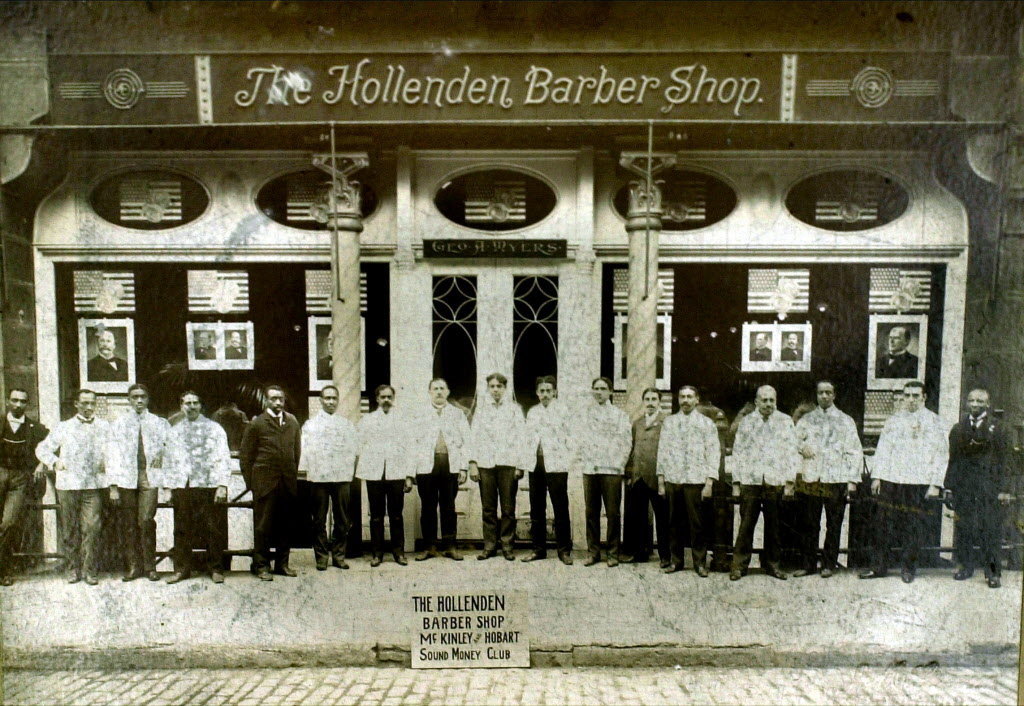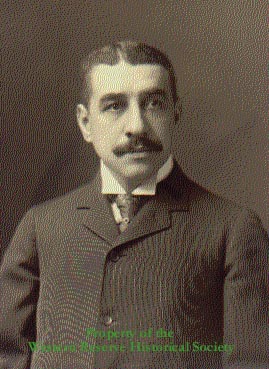
Good Morning POU!
Today we feature George A. Myers, a late-1800s Cleveland barber whose shop was his ticket to becoming an influential voice in Republican politics at a local, state and national level.
George Myers was born in Baltimore, Maryland on March 5, 1859. His father, Isaac Myers, was an important figure in the free black community, and was among the first to attempt to organize black laborers into unions. He was elected president of the National Labor Union in 1870. George spent his first ten years in Baltimore. Upon the death of his mother and because of a planned tour of the south by his father to organize black workers, he then was sent to Providence, Rhode Island, to the home of Reverend J. A. W. Burley. He attended the Providence public schools and later transferred to preparatory school at Lincoln University in Chester, Pennsylvania. When his father remarried, he returned to Baltimore to finish high school.
Myers was unable to enroll at Baltimore’s city college because he was black. As a result, he decided to quit school, and moved to Washington, D.C. in 1875 where he became an apprentice house painter. He returned to Baltimore shortly thereafter, however, and became an apprentice barber. This caused his father much displeasure, as the older Myers had wanted his son to enroll at Cornell to study medicine. In 1879 Myers moved to Cleveland and worked at the Weddel House barber shop, becoming its foreman. It was at the Weddel House that he first met Mark Hanna. In 1888, with Liberty E. Holden and other prominent Clevelanders providing the financing, Myers purchased the Hollenden House barbershop.
 George Myers’ Hollenden Barber Shop, circa 1900-1910. Photo courtesy of The Western Reserve Historical Society. Myers employed more than 30 people in his enterprise, which used the most modern equipment of the time.
George Myers’ Hollenden Barber Shop, circa 1900-1910. Photo courtesy of The Western Reserve Historical Society. Myers employed more than 30 people in his enterprise, which used the most modern equipment of the time.
Myers made the shop into one of the most modern and lavish in the nation, employing 17 barbers plus manicurists, porters and podiatrists and installing a telephone at each chair. The hotel was a gathering spot for the social and political elite, and Myers could eventually boast of barbering eight presidents, many congressmen and celebrities including author Mark Twain.
Under Myers’s management the barbershop came to rival the bar as a center for political gossip and activity. It became a mark of distinction to have a personal shaving mug in Myers’s rack. He also made his shop into one of the most modern in the nation, with porcelain fixtures, individual wash basins, sterilizers, humidors and other equipment. He installed telephones at each chair for customer convenience. Myers even claimed that he pioneered the use of manicurists in barber shops and that it was at his suggestion that the Koken Barber Supply Company developed the modern barber chair. He adopted Elbert Hubbard’s description of his shop, “the best barber shop in America,” not only for advertising but out of the pride he took in his work. He was eventually to boast of shaving or barbering eight presidents, dozens of congressmen and other luminaries such as Mark Twain, Lloyd George and Marshall Foch.
Myers’ involvement in “the game,” as he called politics, included serving as a delegate to Republican National Conventions and organizing black votes for GOP candidates.
George Myers finally retired from the barber business in January 1930 because of a serious heart condition. He sold the shop to the hotel and planned a vacation. It never took place. He died in the ticket office on January 17.
Myers was a member of the Elks, Masons and the Caterers Association, a black organization. He was also a member of the City Club of Cleveland. Married in 1896 to Maude Stewart, he was the father of two children, Herbert D. Myers and Dorothy Myers Grantham.

